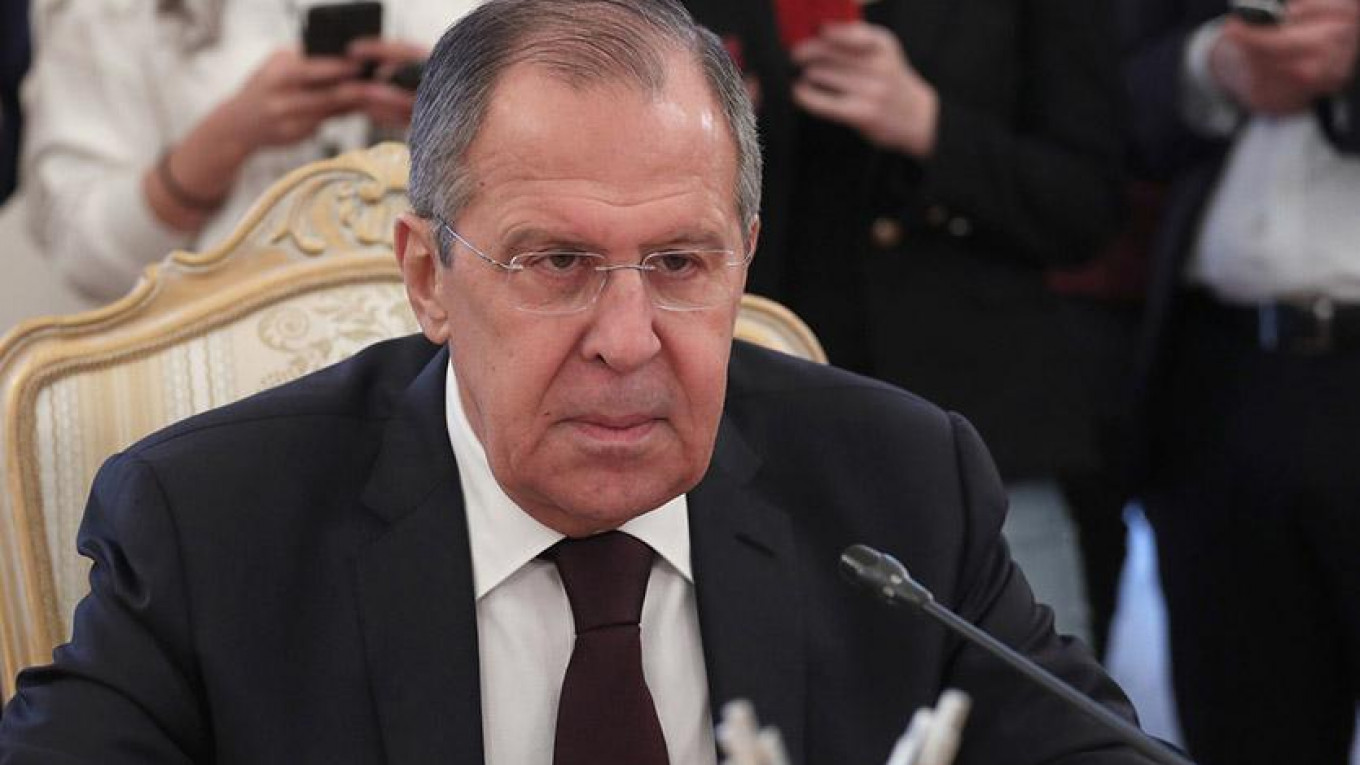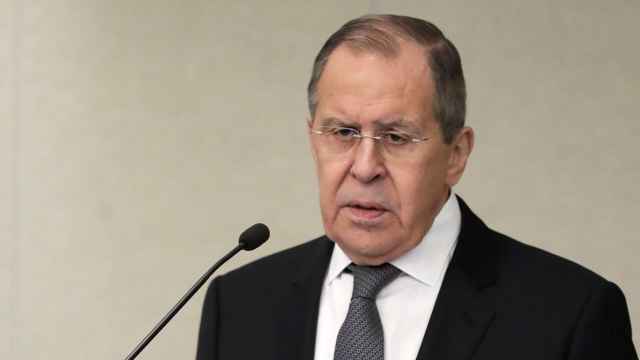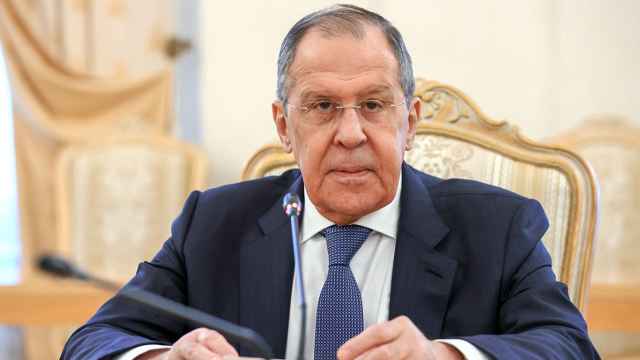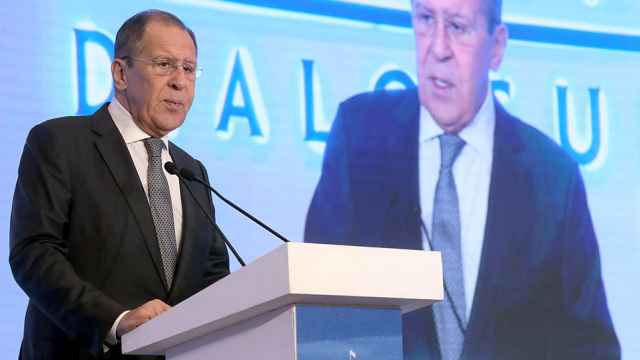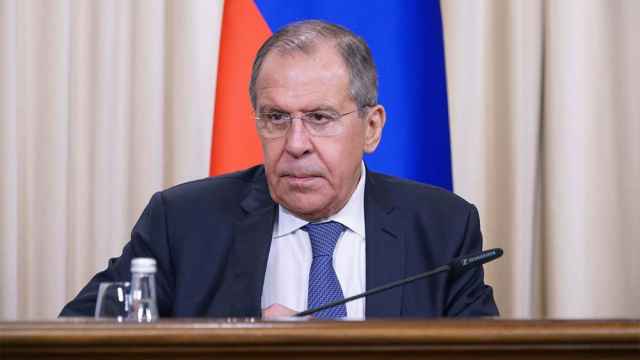What are a country’s redlines? Which of them are really red and which are — to quote one German newspaper editor’s opinion of the European Union’s stance on the Ukraine conflict — merely pink?
The war in Ukraine, now totaling about 10,000 dead, offered some answers early on. At the start of that conflict in 2014, it began to emerge that Vladimir Putin had genuinely come to view the “escape” of any post-Soviet republic (except the Baltics) to the West — and not only to NATO but to the European Union as well — as the crossing of a Russian redline.
Now Foreign Minister Sergei Lavrov has become perhaps the first top Russian official to explicitly say as much, and more, in a recent interview to the Kommersant business daily.
The revelation of Moscow’s redlines offers an opportunity for serious discussion: Can Russia’s vital interests underlying these limits be reconciled with other European countries’ interests to avoid conflict and, if so, how?
Predictably, armed aggression against Russia would amount to the crossing of a redline. However, Moscow’s redlines likewise spread to neighboring countries, according to Lavrov.
“If we proceed from the assumption that we [Russia] cannot have any interests in the region, in the Euro-Atlantic, then, yes, the border of the Russian Federation is a redline. But the fact is that we do have legitimate interests” beyond Russian borders.
An attack, for example, on one of Russia’s post-Soviet clients — even if it’s an unrecognized separatist republic — would constitute the crossing of such an “external” redline, according to Russia’s top diplomat.
“A redline was crossed on the orders of Mikhail Saakashvili as soon as the attack began on South Ossetia, where our [Russian], Ossetian and Georgian peacekeepers were stationed,” Lavrov said, invoking the Russian narrative, which firmly puts the blame on Georgia for hostilities in its breakaway province in August 2008.
The ouster of a friendly government through revolution or use of force would also constitute the crossing of a Russian redline, according to Lavrov, as was the case in Ukraine and almost in Syria.
That redline becomes carmine if the attempted regime change occurs in a country with an ethnic Russian minority, Lavrov said: “Russia has the right to defend the interests of its compatriots, especially when they are persecuted in many countries, when their rights are suppressed, as happened in Ukraine.
“This is Ukrainian history, the history of the coup, the history of the West’s betrayal of international law, when an agreement signed by the foreign ministers of the leading EU countries [and Ukraine’s then-President Viktor Yanukovych and leaders of the Ukrainian opposition on Feb. 21, 2014] was simply trampled... that was a red line,” he said.
What Lavrov did not say explicitly, but hinted at, is that Russia viewed the victorious Ukrainian opposition’s desire to steer Ukraine into Western alliances, such as NATO, as unacceptable. “Russia has redlines. I believe that serious politicians in the West understand that these redlines need to be respected just as they were respected during the Cold War,” Lavrov said.
One should note that, while Moscow has long been prepared to use force when an acute challenge arises to one of its vital interests, including its interest in being surrounded by friendly states, Russia did not always see its neighbors’ aspirations to be closer to the U.S. as a threat.
In fact, in the early 2000s Russia itself was trying to harmonize various laws and regulations with the EU’s, with a view to one day, perhaps, join the union. Putin even asked then-secretary general of NATO Lord Robertson when the alliance was going to invite Russia into the pact.
Then, however, color revolutions began to erupt in post-Soviet states and Putin, insisting that the West’s general support for democratization was actually meant to foment a regime change, became convinced that Russia would be its next victim.
It was the revolutions in Georgia in 2003 and Ukraine in 2004 that played the lead role in changing Putin’s views of the West’s intentions toward Russia and, therefore, his perceptions of where Russia’s redlines should lie. After these revolutions and the subsequent and futile effort by the George W. Bush administration to offer Georgia and Ukraine membership action plans for joining NATO, in 2008, the Russian leadership began to view Russian-Western interaction in the post-Soviet neighborhood as a zero-sum game.
In addition, Russia’s national power vis-à-vis the West has arguably increased in that period, making the country’s leadership more confident that it can enforce its own redlines in the immediate post-Soviet periphery. Lavrov’s interview is a testament to that.
It also goes without saying that Russia is not the only country entitled to have redlines in this new Cold War and that armed aggression against another state is inadmissible.
Europe’s NATO members and neutral states also have their redlines and some of them conflict with those of Russia. Reconciling these differences — or rather the vital national interests underlying them — through diplomacy is one challenge that needs to be tackled if only to prevent a situation, in which another crossing of a redline leads to an inter-state armed conflict, which may escalate into a NATO-Russia conflict that would have devastating consequences.
As Henry Kissinger said: “If we treat Russia seriously as a great power, we need at an early stage to determine whether their concerns can be reconciled with our necessities. We should explore the possibilities of a status of non-military grouping on the territory between Russia and the existing frontiers of NATO.”
Simon Saradzhyan is director of Russia Matters, where this article was originally published, and a former Moscow Times journalist. The views and opinions expressed in opinion pieces do not necessarily reflect the position of The Moscow Times.
A Message from The Moscow Times:
Dear readers,
We are facing unprecedented challenges. Russia's Prosecutor General's Office has designated The Moscow Times as an "undesirable" organization, criminalizing our work and putting our staff at risk of prosecution. This follows our earlier unjust labeling as a "foreign agent."
These actions are direct attempts to silence independent journalism in Russia. The authorities claim our work "discredits the decisions of the Russian leadership." We see things differently: we strive to provide accurate, unbiased reporting on Russia.
We, the journalists of The Moscow Times, refuse to be silenced. But to continue our work, we need your help.
Your support, no matter how small, makes a world of difference. If you can, please support us monthly starting from just $2. It's quick to set up, and every contribution makes a significant impact.
By supporting The Moscow Times, you're defending open, independent journalism in the face of repression. Thank you for standing with us.
Remind me later.



